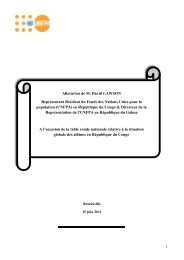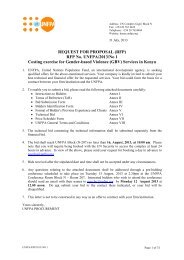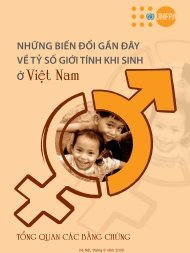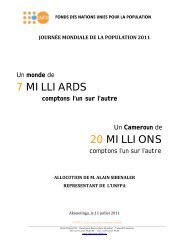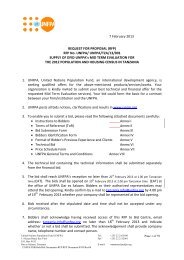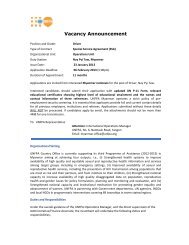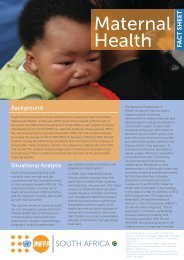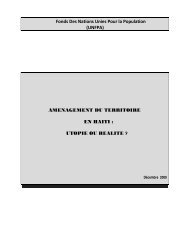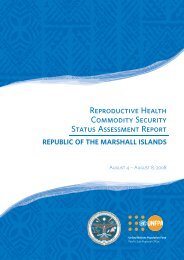A reproductive health needs assessment in Myanmar
A reproductive health needs assessment in Myanmar
A reproductive health needs assessment in Myanmar
You also want an ePaper? Increase the reach of your titles
YUMPU automatically turns print PDFs into web optimized ePapers that Google loves.
A Reproductive Health Needs Assessment <strong>in</strong> <strong>Myanmar</strong><br />
Birth Spac<strong>in</strong>g<br />
The Government of <strong>Myanmar</strong> started to provide birth spac<strong>in</strong>g services <strong>in</strong> the public sector <strong>in</strong><br />
1991 with assistance from a number of <strong>in</strong>ternational agencies. Public sector birth spac<strong>in</strong>g<br />
programmes currently provide services <strong>in</strong> 117 of the country’s 320 townships, <strong>in</strong>clud<strong>in</strong>g 72<br />
supported by UNFPA and 36 supported by UNDP. The majority of birth spac<strong>in</strong>g products<br />
and services are, however, still provided by the private sector.<br />
UNMET NEED FOR BIRTH SPACING<br />
There are a number of <strong>in</strong>dications that there is a significant unmet need for birth spac<strong>in</strong>g <strong>in</strong><br />
<strong>Myanmar</strong>. From the provisional results of the FRHS (MOIP 1998a) it was found that<br />
approximately 10 per cent of previous births were either not wanted at all (6.6 per cent) or not<br />
wanted at that time (3.3 per cent). These figures were slightly higher <strong>in</strong> rural than urban<br />
areas of <strong>Myanmar</strong>. The proportion of women report<strong>in</strong>g that they do not wish to have any<br />
more children rose from 46 to 58 per cent between 1991 and 1997 (MOIP 1995, MOIP<br />
1998a). The difference between 1991 and 1997 was greatest amongst urban women and<br />
those with a higher level of education (see Table 5).<br />
Table 5. Per cent of currently married women want<strong>in</strong>g no more children<br />
1991 1997<br />
Education<br />
No school<strong>in</strong>g 52 63<br />
l-4 standard 45 57<br />
5-8 standard 41 56<br />
9-10 standard 39 57<br />
University 23 51<br />
Residence<br />
Urban 47 63<br />
Rural 46 57<br />
Total 46 58<br />
Source: M<strong>in</strong>istry of Immigration and Population (1998) Fertility and Reproductive Health<br />
Survey (prelim<strong>in</strong>ary results), and M<strong>in</strong>istry of Immigration and Population (1995) <strong>Myanmar</strong><br />
Population Changes and Fertility Survey.<br />
In 1997, one quarter of the women report<strong>in</strong>g that they wanted no more children were found to<br />
not be currently amenorrhoeic, pregnant or absta<strong>in</strong><strong>in</strong>g, but not us<strong>in</strong>g a contraceptive method.<br />
Data were also collected for women who reported want<strong>in</strong>g to space their next birth for more<br />
than 24 months (18.9 per cent of currently married women). Of these women, nearly 30 per<br />
cent were not amenorrhoeic, pregnant or absta<strong>in</strong><strong>in</strong>g and not us<strong>in</strong>g contraception. From this<br />
calculation, a total of 20.6 per cent of the currently married women were found to be <strong>in</strong> need<br />
of contraception to either space their next birth, or to limit their family size.<br />
27




